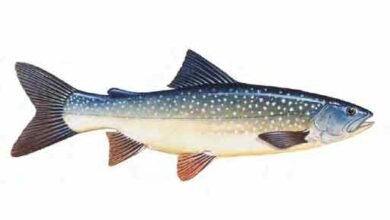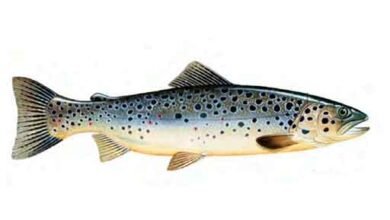Trout
-

Arctic Char
Arctic Char can reach a maximum length of about 1m (3¼ feet). Their backs are dark brown or olive, with lighter sides fading to a lighter-colored belly. Colors vary considerably during spawning, especially in male arctic char – the entire body can be gold or orange, and the lower feathers are often edged with white. The species is believed to spawn from August to October in alternate years. Arctic Char is a popular rustling in the lakes of Kodiak Island in Alaska. They also congregate in the large lagoons of…
-

Dolly Varden
Dolly Varden is part of a family of four. They grow to about 1.3m (4¼ft) in length, and their lighter spots distinguish them from trout and salmon. Adult male Dolly Varden develop a distinctive bright red coloration with the lower body, and their wings are red-black with white edges. Over time, their lower jaw grows. Adult females are similar in color but less bright. Sea-going Dolly Vardens are more silvery, with many red and orange spots on their flanks, and greenish-brown dorsal fins. Dolly Varden spawns in streams during the…
-

Lake Trout
Lake trout can be up to 1.5m (5ft) in length, apparently Spinytails, and most other trout, do not have dark spots Species They are commonly found in lakes and rivers and are Fast swimmers, aggressive predators, eat all kinds of food—organisms ranging from plankton to small mammals. Adults are lake trout. They are known to eat small lake trout. When they arrive, they give birth. Five to six years of age. Females lay their eggs on top. Rocky bottom of lakes. This enables the eggs to lie in the crevices.…
-

Brown Trout
Large, predatory brown trout are known as ferox, or cannibal, trout. Once considered a distinct species, it is now known to be simply brown trout that have evolved into a primarily fish-based diet that sometimes includes smaller members of its species. Ferox trout have a bent jaw and live longer than most brown trout. The brown trout (Salmo trotta, Morpha: Foreo), and its marine form, the sea trout (Salmo trotta, Morpha: Trotta), are among the most important fishery species and are found worldwide. The species is native to Europe and…



